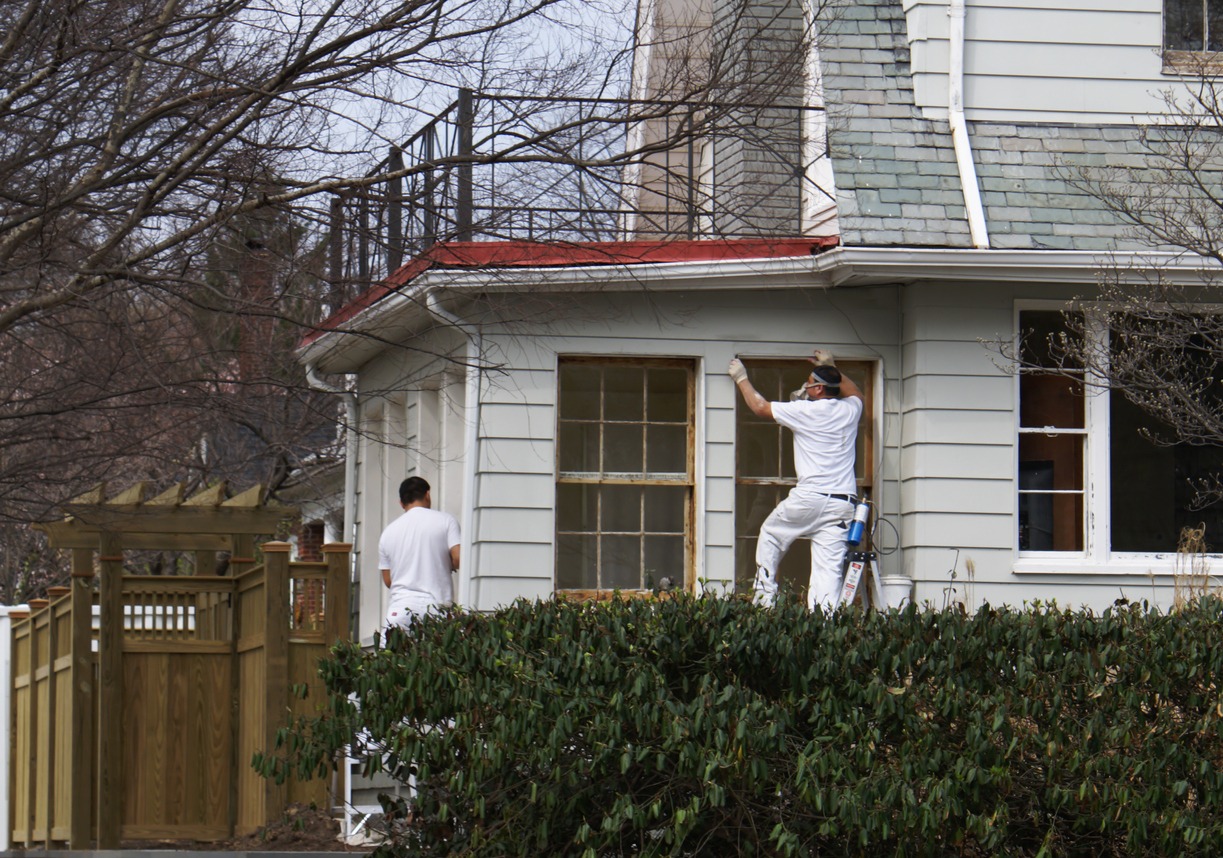Life hacks are incredibly useful because they make essential and everyday tasks a lot easier. Fortunately, we have experts who are glad to share some tips and tricks for exterior house painting in Concord that will help you paint like a pro.
1) Check your local weather forecast
The success of an exterior paint job depends on the weather conditions in your area. So, it’s better to plan your painting project ahead. Consider seasonal weather patterns. Choose a time of the year when it is not too hot, wet, cold, or humid. Paint requires time to dry and will not stick to surfaces that are damp.
2) Protect your landscape
To achieve professional results, minimize the mess when painting your home’s siding. Loosely cover any nearby plants, shrubs, flower beds, hedges, decks, vehicles, etc. to protect them from the dripping paint or overspray.
3) Wash and clean your home’s exterior surface
Cleaning your home’s exterior surface should be easy as wiping off dirt and dust with a clean and damp cloth. Otherwise, consider using a wire brush if you have to remove more stubborn dirt. For cleaning the uppermost parts of your home, you may have to use a pressure washer since the water’s high-pressure water jets can reach and clean inaccessible areas. While the tool provides a quicker cleaning process and better results. It’s more sensible (and safer) to hire someone who has professional experience in pressure washing to clean your home.
To kill mold and mildew on your home’s siding, use a solution containing TSP (trisodium phosphate) and bleach. In addition to killing existing mold and mildew, this TSP-and-bleach solution will also inhibit the growth of new mold and mildew.
After washing and cleaning the surface, make sure that your siding is completely dry before making the necessary repairs, priming, and painting. A clean and smooth surface will help the paint to stick to it better.
4) Sand and scrape
When you see that the paint is peeling or chipping, scrape or sand the surface before applying a new coat of paint. This is a crucial step as the paint will not adhere to the surface properly if it still has peeling or chipping paint. Sanding smooths out the surface and enables the paint to adhere to it better. Sure, it takes quite some time to scrape and sand the surface, but you will see professional-looking results that are worth the effort.
5) Caulk before or after paint
Caulking can be done either before or after painting. But in general, caulk is applied before painting if the caulk job will be visible once the paint job is done. Caulking effectively seals cracks around doors, windows, baseboards, trim, etc. On the other hand, caulk should be applied after painting if you’re going hide the caulk job by trim or molding.
6) Prime before paint
Always use a primer. Even a paint-and-primer in one will also do. Primer helps the finishing paint stick even better, which means it’s less prone to peel off or chip. In addition, primer helps in covering flaws, blocking stains, and making the color change (especially when painting over dark walls with a light color) a lot easier. Use high-quality primer.
7) Combine paints to get a uniform color
It’s better to buy more paint than you’ll need and mix several cans of paint into a larger container, typically a five-gallon bucket. This will help you achieve a consistent color applied to your home’s siding. This step is called “boxing” the paint, which professional painters also follow when painting large spaces.
8) Paint from the top down
When applying paint on your home’s exterior surface, always start from the top and work all the way down to the bottom. You should work in sections as you paint from the top down. The reason for this is simple – dripping paint. Even professional painters won’t be able to prevent those drips, that’s why they cover the deck floors, lawns, and flower beds, etc. with drop cloths.
9) Painting with roller tips
If you’re using a roller to apply paint, here are the steps to achieve the best finish:
- Use a paint grid to get rid of any excess paint on the roller.
- Start rolling at an area about 3 to 4 feet wide using a reasonable amount of pressure.
- Then, use a paintbrush to make sure that the paint gets into the crevices and the bottom edge of the siding.
- Continue painting using the brush, this time brushing with the grain to smooth it out.
10) Mask up and mask off
There are two types of masks you must use. One type of mask is a regular disposable face mask or respirator to protect your mouth and nose from paint fumes and sanding dust. Another type of mask is painter’s tape to cover door and window trim, outdoor electrical outlets, and switches, and other areas where paint is not needed.
So, is exterior painting a good DIY project or done by professionals?
For homeowners who won’t hesitate to do prep work, exterior painting in Concord can be a DIY-friendly project. With proper planning and equipment, homeowners can significantly save on labor costs and even achieve professional-level results.
However, a DIY exterior painting project does require investing considerable time and effort, not to mention sufficient skills and experience. Still, it depends on the complexity of the project whether it can be done by a DIY-er or professional. For multi-story homes or homes with complicated structures or architecture, it makes sense to hire a professional painting contractor if you want the best results with the slightest hassle.
You also need to assess other important things like your skill level, budget, timeline, and specific needs to determine if a DIY or professional help is better for your exterior painting in Concord project. With proper preparation, planning, practices, and equipment, either option can yield a renewed and revitalized exterior that will enhance your home’s curb appeal and increase its value.
If you go the DIY route, follow the tips above that will help you achieve satisfactory results in your exterior house painting in Concord. Of course, hiring professional help will help you get an exceptional and long-lasting paint finish with minimal hassle.



